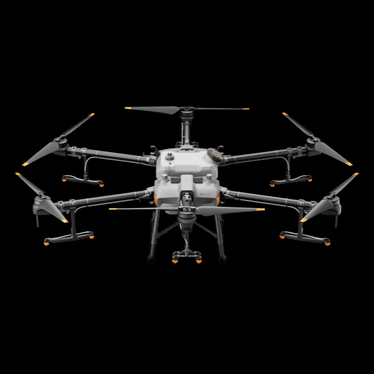Amongst the wide range of applications for drones in agriculture, there is a clear trend towards using them to sow seeds. In the following article, we briefly describe which crops are suitable for this and which technologies are required.
Undersowing is the sowing of a second crop alongside a main crop that is ready for harvesting earlier. It can take place at the same time as or somewhat later than the sowing of the main crop. And if it takes place later, there are many advantages to using a drone.

One obvious major advantage is that drones can be used for sowing when the soil is deep and wet. And growing crops often make it impossible for machines to cross fields without causing major damage. Undersowing also increases the water-holding capacity of the soil by reducing evaporation. And undersowing and catch crops make economic sense and are sometimes even mandatory. They occupy a special position in organic farming, especially due to the fact that they increase nitrogen fixation. Crops that are suitable for undersowing include cereals, maize, soya bean and pumpkin. The technique promotes soil fertility (mainly thanks to dead plant material and roots or root exudates), reduces erosion and helps to suppress weeds. By releasing high rates of root exudates into the soil, catch crops with high root densities are an important part of this approach. The most productive period is between July and mid to late September. Closely planted vines that are difficult to reach with conventional tractors perfectly exemplify a situation in which the use of agricultural drones can be worthwhile. Subsidies for such uses can be applied for under “ÖPUL 2023-2027” for “erosion control in arable land” or “greening of arable land”. In addition to sowing seeds, it may also be possible to use drones in future to spread feed (e.g. fish farming), humus granules, glacial flour granules, slug pellets or fertiliser granules. In some European countries, such drones are also used to reforest forests after fires. And they can also be employed in organic midge control. This application was tested on the River March in 2020.
One drone that could be used for such deployments is the DJI T30. This unmanned aerial vehicle (UAV) can only be operated in the “Specific” category due to its take-off weight of over 25 kg. Operations in this category require a special application. The company DJI is the world market leader in the area of drones. Around 200,000 such drones were in use in 2022 and, in China, they are used for the treatment of rice. This model is generally used as a “spraying drone” but it can be enhanced by the addition of a spreading module that consists of an opening gate and a rotating turntable. The DJI T30 Agras can carry a payload of about 30 kg. Depending on the seed used, this would permit a spreading line of 1-3 ha per load.
RWA is currently putting a lot of thought into how to offer such a service. In the coming weeks, we will clarify the crops and the regions for which it would make sense. And over the course of the next few years, we will see whether this form of seed application will become widespread or remain confined to special applications.
Picture: (c) dji.com
